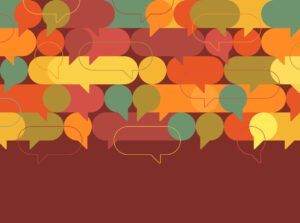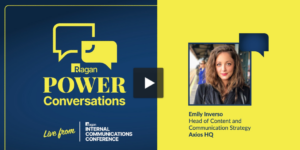Beyond commas and typos: What to look at when you’re editing
Ask these three questions to make sure you’re editing and not just proofreading.

When someone asks you to edit something – really edit it – they’re asking for more than just a check to ensure the punctuation is right.
Beyond making sure your grammar is sound, an editor should be making sure your thinking is sound. A good editor should be your toughest critic, your biggest fan and your smartest audience.
These are the questions to ask when taking a close look at a piece. Punctuation and AP Style are the least of it.
Does it make sense?
This is the most fundamental and critical role of an editor: Making the words make sense.
It might sound like an obvious thing that the writer already should have handled. But it’s very easy for a writer to get in the deep weeds and not realize that what they’ve written makes total sense in their head, but not on the page. It’s an editor’s job to come in with fresh eyes and really interrogate the piece.
This means making sure the writing makes sense to read, with words used properly and in the right places. But it also means making sure there is enough context and background provided for the intended audience to understand, but not enough to bog the piece down. It means making sure any quoted stats or research seem correct and bolster the argument they’re being used to make. It means taking a step back and asking: What does this really mean?
The best way to practically do this is to go in with a beginner’s eyes. Push aside everything you think you know about the topic and read it as cold as you can. Do you understand it? Does it answer your questions or pique your curiosity to know more? What do you walk away knowing, feeling and thinking? Is that what the writer intended?
Does it sound good?
This is the question that comes closest to proofreading, but it’s still distinct. Lots of things are perfectly grammatically correct but lack rhythm, style and flair. Is the writer alternating long and short sentences or is everything starting to sound one note? Does one section flow seamlessly into the next with thoughtful transitions that lead the reader on a journey through the story? Are there big chunks of text that will be difficult to read on a screen? Are there anecdotes or bits of humor where appropriate?
This is also where an editor can offer brevity. We all know that it can be difficult for writers to “kill their darlings” and cut the pretty words they spent so much time crafting. An editor can be more brutal and surgical. Whether it’s eliminating extra words or extra pages, an editor can tighten so the very best sections shine.
An editor can – and should – prod a writer to dig deeper and push a little harder to find the right analogy, the right quote or the right turn of phrase to turn their copy from meh to marvelous.
Will people read it?
This is the part that too many writers and editors forget. You can write the most riveting copy in the world, but if no one reads it, does it really matter?
An editor should take the time to think about how people will find your story. If it’s shared in an email, consider the subject line. If it lives as an intranet post or blog article, think about that headline. How are you communicating to people what they’ll gain from taking precious time out of their day to read what you’ve written?
An editor should also consider the audience. Is this written at a vocabulary and knowledge level that’s appropriate for who you’re trying to reach? Is it so long that people won’t finish, or too short to be useful? Are there other resources you should link to?
No matter how skilled you are, you need an editor. As soon as this piece is done, it will ship to a trusted wordsmith who will help make it better. No doubt they’ll catch some weird commas and typos, but they may also catch flaws in logic, parts where the piece was boring and sentences where the language could be sharper.
Make sure you do the same.








This is one of the best articles about editing that I have ever read.
Bravo!